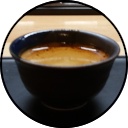The Guide
This post is about a new guide I’ve put up in my How-To section on using a refractometer. Check out the guide HERE.
Why Make This?
Scott Rao’s Post
A while back Scott Rao posted some refractometer tips (shown to the side) that made me realize most guides on using the refractometer just aren’t very good.
Some have unnecessary steps that can be easily eliminated, aren’t clear on when to filter, don’t stress the process of getting a stable reading, etc.
Rao’s tips are fantastic for experienced users, with the small sample sizes to eliminate the need for an intermediate cup and the focus put on making sure you have a stable reading. Since there can be quite a bit of change in readings if the sample has not sufficiently cooled.
But the tips do assume some baseline knowledge of using a refractometer to correct things you may be doing wrong. So I wanted to put together a guide on how to use a refractometer the right way from the start so if you’re totally brand new to it you can start off doing it right.
Better Equations
Another reason for the guide is to have the right equations (and the way to use the VST app to match them) in the same place as the guide on using the refractometer. It can be difficult to compare extractions when some people are using the raw math, some people are using the VST app with various presets, and it just makes sharing a mess.
I’ve also included a more accurate way to look at extraction discussed by Jonathan Gagné in Measuring and Reporting Extraction Yields and A More Accurate Way to Calculate Extraction Yield. It’s obviously nonstandard for now, but hopefully it can catch on and help us better correlate extraction with taste with more factors taken into account.
I’ve linked the guide below, and at the start of this post. The calculator using Jonathan’s equations is also linked below.
